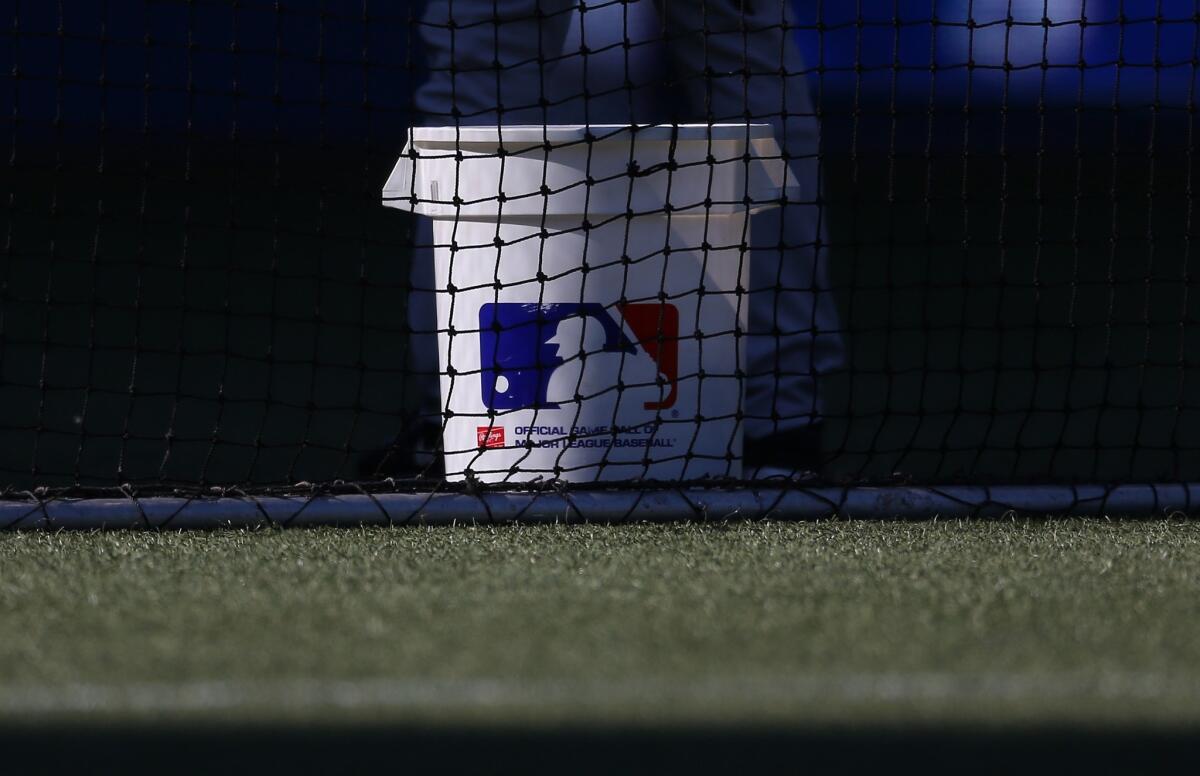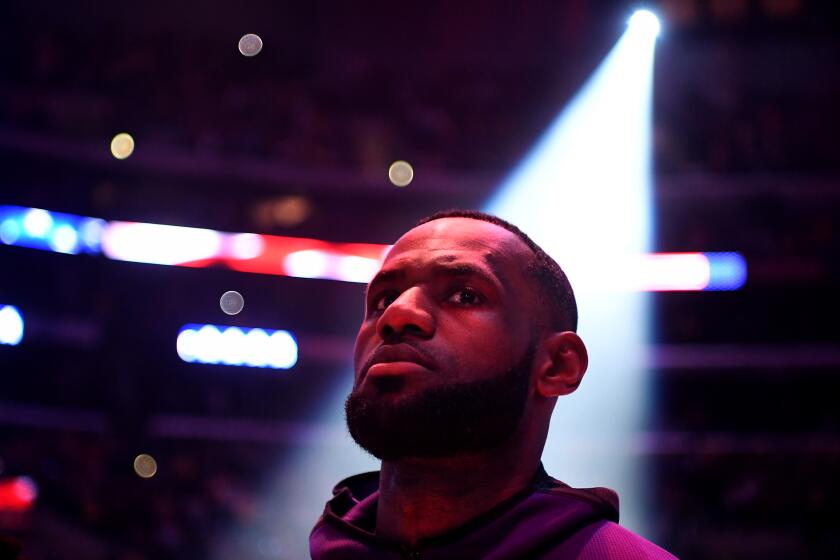When it comes to grass, baseball no longer fakes it

- Share via
Like many great romances, Major League Baseball’s love affair with AstroTurf was born in experimentation, applied in desperation and appreciated best in moderation.
Now comes its expiration.
After five decades in which artificial grass was often as ubiquitous — and in some places as loathed — as the designated hitter, professional baseball is going natural. Where once a dozen stadiums featured faux fields, this season there are only two: Toronto’s Rogers Centre, where the Angels will finish a three-game series Thursday, and Florida’s Tropicana Field, home of the Tampa Bay Rays.
And with the Jays discussing plans to pull up their rug soon, and the Rays looking to get out of their domed ballpark, plastic pastures could soon be a thing of the past.
“Good riddance,” says Hall of Fame slugger Andre Dawson. “Personally, I just wish it would have been gone a long time ago.”
Dawson had both knees battered and lost a lot of skin off both arms — plus a couple of productive years off the end of his career — because of the abrasive and unforgiving AstroTurf field at Montreal’s Olympic Stadium, where he played his first 11 big league seasons. Dawson won eight Gold Glove awards and made eight All-Star teams, but he also endured 12 knee operations after playing 81 games a season on a plastic field laid over concrete.
“I saw Andre Dawson get his knees drained I don’t know how many times in Montreal,” says former teammate Tom Foley, now a coach with the Rays. “It takes a toll on you.”
Some teams and players knew how to use AstroTurf to an advantage. The surface was hard and therefore fast, so some balls hit through the infield scooted between the outfielders all the way to the wall. And the field was also as smooth as a pool table, meaning fielders didn’t have to worry about bad hops.
Shortly after the Kansas City Royals opened Kauffman Stadium in 1973, the front office put together a roster of speedy slap hitters and the team went to the playoffs seven times in 10 seasons, capped by its only World Series title in 1985. Speedy outfielder Willie Wilson had 21 triples that season, the most in the majors in 35 years.
Ten years later, the Royals took out the turf. They’ve had one winning season since.
In the 1980s, the St. Louis Cardinals, when they played home games on turf, followed a formula to those winning Royals teams. The Cardinals led the National League in wins and made it to the World Series three times in six seasons. In all three of their World Series seasons, they finished last or next to last in home runs but were first or second in triples, stolen bases and fielding percentage.
“Without question it changed the game,” says Matthew Boggs, AstroTurf’s director of research.
Boggs played and coached on artificial grass and had a brief professional career. “As a hitter, if you didn’t hit it at somebody, there was a good chance you got a hit,” he says. “As an infielder, you knew exactly what kind of bounce you were going to get. So you never had to worry about odd hops. As a pitcher, you had to hate it.”
AstroTurf was never intended to affect the way baseball was played. It was adopted to ensure games could be played at all.
When the Houston Astrodome opened in 1965, the field was composed of a Tifway 419 Bermuda grass that received sunlight through numerous semitransparent Lucite panels installed in the roof. But the glare coming off the panes made it so difficult to track fly balls that the panels had to be painted over, killing the grass and forcing games to be played on a surface of dead grass and dirt that was painted green.
About the same time the grass inside the Astrodome was dying, engineers working on synthetic fibers for a heartier brand of carpeting were asked to see if their product could be used to construct playing fields at urban schools, where wear and maintenance were hampering cash-strapped athletic programs.
An invention called Chemgrass was rolled out for a trial at the Moses Brown School in Providence, R.I. Impressed by its performance — and desperate to keep the Astrodome from becoming the world’s largest dirt-bike track — the Astros installed a Chemgrass infield for the start of the 1966 season, then expanded to the outfield at midseason.
Over the next five years, synthetic surfaces sprouted in open-air stadiums in Cincinnati, Philadelphia, Pittsburgh, St. Louis and San Francisco.
Teams that tailored their game to the field loved it, but the turf proved so punishing on players that it soon fell out of favor. When a flurry of new ballpark construction began in the early 1990s — 20 of the 30 big league stadiums have been built in the last 20 years — AstroTurf, like lava lamps and pet rocks, became a quaint relic of a time gone by.
Today, much-improved modern-day cousins of Chemgrass are used at many college and high school facilities. Boggs concedes that professional baseball fields will probably stay natural.
“I would be shocked if, at the big league level, you could ever get guys to say they like a synthetic-turf field,” he says. “If we went out and showed scientifically that everything was exactly the same, I still don’t think we’d get approval.”
Twitter: @kbaxter11
More to Read
Go beyond the scoreboard
Get the latest on L.A.'s teams in the daily Sports Report newsletter.
You may occasionally receive promotional content from the Los Angeles Times.











